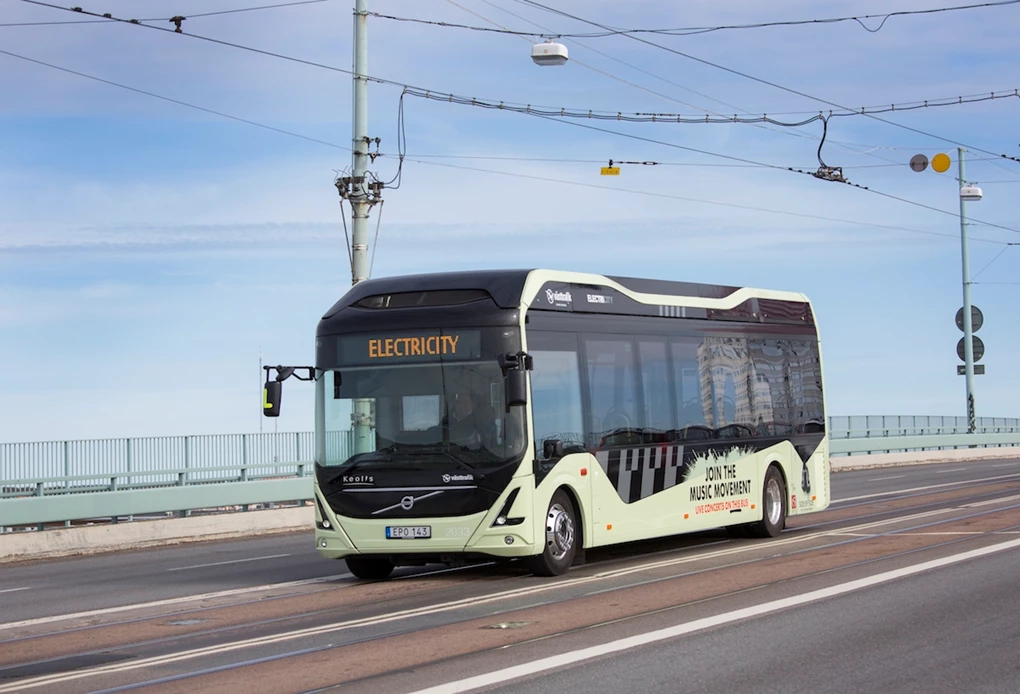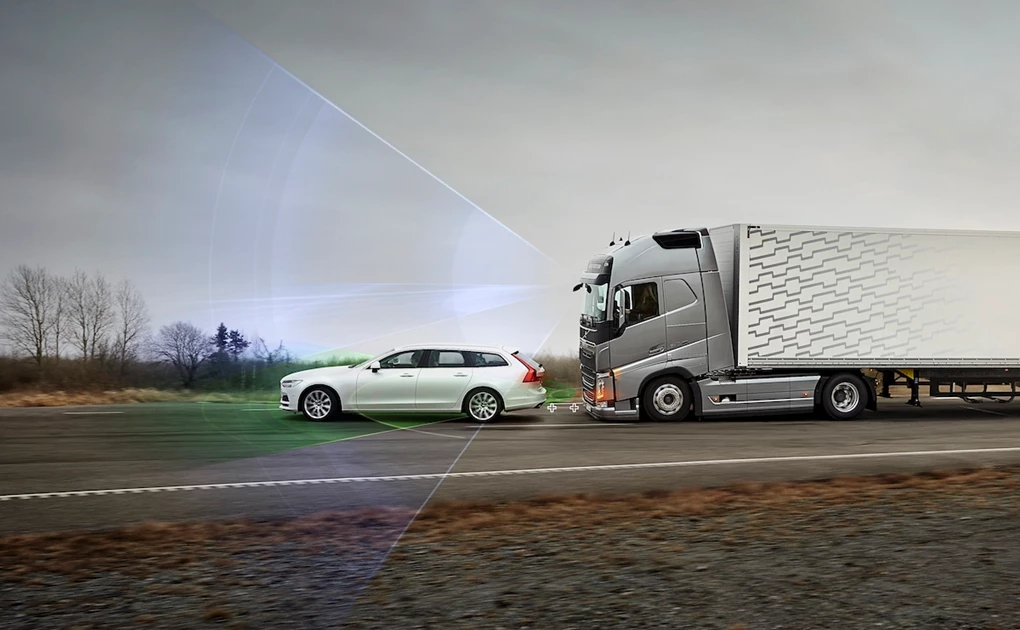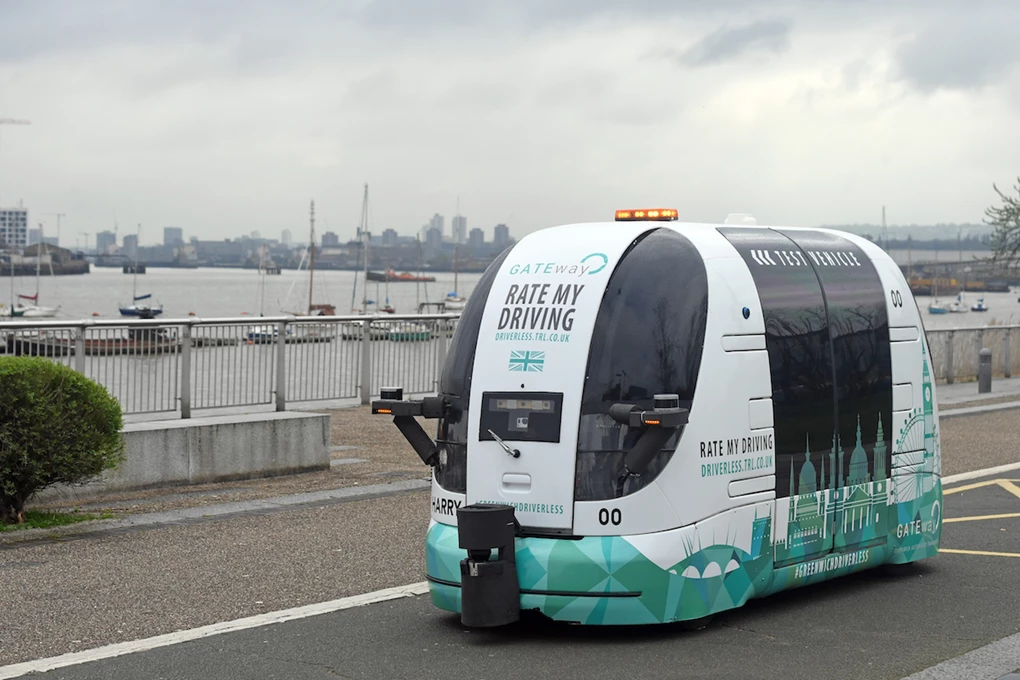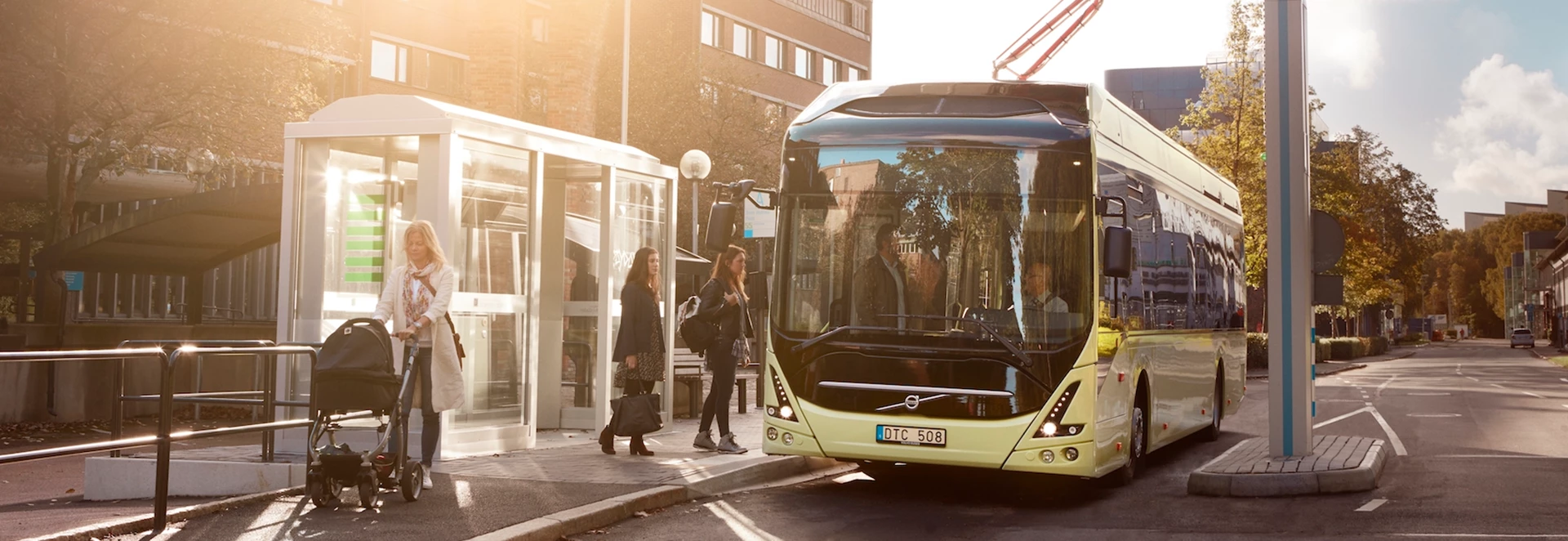What’s your favourite feature in your car? The infotainment system? The surround-view cameras? Adaptive cruise control? Its hybrid or electric drivetrain?
Whether you’re a gadget freak or someone who is more interested in reducing emissions or powertrain technology, one thing is for certain. Whatever your favourite feature, there’s a good chance it first hit the road in something much bigger, much heavier and much squarer than your current steer.
That’s because the seemingly unglamorous world of road transport – be it for goods or passengers – is actually the ideal testbed for new technology.
For example, earlier this month, Volvo put its first fully electric bus into service in the UK, operating in Manchester. Electric buses themselves aren’t anything new, as there are already many of them in service in London, Oxford and other major cities. But the Volvo one is different in that it uses a system called Opportunity Charging, or OppCharge. It works by using an overhead ‘pantograph’, that drops onto the roof of the vehicle when it draws into a bus stop and tops up the charge while the passengers alight.

In general terms, it’s clumsy and awkward. But because a bus’s job is to stop every five minutes, usually in a dedicated layby, the system can be deployed without causing traffic chaos. In China, a similar system is being developed, which charges buses from beneath. Imagine, if you will, a future in which the same technology is applied in a much smaller package, to trickle charge electric cars from the power supplied to street lamps and traffic lights, via the road surface. A pipe dream? Maybe not.
After all, the driverless vehicle is with us already. Sure, the media debate rumbles on as to whether or not autonomous vehicles will ever make their way past the many legislative hoops that need jumping through, but the reality is this – the fully autonomous vehicle already exists, and it looks nothing like a Google car. Two of the USA’s biggest tractor manufacturers, Case New Holland and John Deere, have been making autonomous vehicles for the past two years. Tractors that can be programmed using a combination of GPS and 4G technology to plough or harvest a field without a driver. Because they’re operating on private land, with no public interaction, the approval requirements are less stringent and the public risk much lower than on the road.
The same thinking has led Volvo Trucks to pursue autonomy projects of its own, all of which help the entire automotive industry better understand the potential of driverless technology. In 2016, it put the world’s first autonomous trucks into service underground, operating in the Kristineberg mine in Sweden. After successfully trialling the technology for a year, it brought it up to the surface and in August 2017 it began tests of a fully autonomous bin lorry, operating on a pre-programmed route in partnership with waste management company Renova.

“There is amazing potential to transform the swift pace of technical developments in automation into practical benefits for customers and, more broadly, society in general,” said Volvo’s chief technology officer, Lars Stenqvist. “Our self-driving refuse truck is leading the way in this field globally, and one of several exciting autonomous innovations we are working with right now.”
Perhaps the most interesting point, here, though is that Volvo’s fully autonomous vehicles are powered by technology that not only already exists, but is fitted to all of its commercial vehicles and a good number of its cars. Features such as autonomous braking, adaptive cruise control, radar, road positioning cameras, steering assist (found on trucks and buses) and speed limit detection. All of these systems exist on many of today’s cars, having been tested first on commercial vehicles, and the only barrier to using them all at once to create a fully automated car is legislative.
Volvo is now working in partnership with ride hailing service Uber on a $300 million joint venture looking into autonomous cars, the thinking being that they could be put into service first as public service vehicles, which, thanks to their status as a recognised technology testbed, can apply for special dispensation in some countries.

That’s something that’s already happening in the London borough of Greenwich with the GATEway project (Greenwich Automated Transport Environment), a study into how autonomous vehicles interact with the general public. Led by the Transport Research Laboratory (TRL), the study has so far seen driverless pods for ferrying passengers and fully automated delivery vehicles dropping off groceries around the Greenwich Peninsula.
Commercial Vehicles are driving other technological leaps, too. At the IAA Hanover Commercial Vehicle Show in 2016, Hyundai announced it would launch a van powered by a Hydrogen Fuel Cell hybrid system, which it will pass down to its car range. Meanwhile, parcel giant UPS is currently testing hydrogen-electric delivery vans in Sacramento, California, to test the fuel’s long-term viability.
Closer to home, Waitrose is one of the companies leading a trial of trucks powered by Biomethane, a fuel seen as a lower emission and wholly renewable alternative to diesel. If it works in a 44-tonne Scania, then a four-cylinder BMW should be water off a duck’s back. While we’re on truck trials, how about this one? Trailer maker SDC, which has its headquarters in Belfast, has taken Formula One-inspired KERS (Kinetic Energy Recovery System) technology and developed it for the road. By pressing a button in the cab, a driver can use the KERS system to help the trailer push the cab, rather than the other way round.
It’s clever stuff. And while trucks and buses might be far from sexy, they’re pioneering the technology that, less than a decade from now, could well be found in your average sub-£10k supermini.




